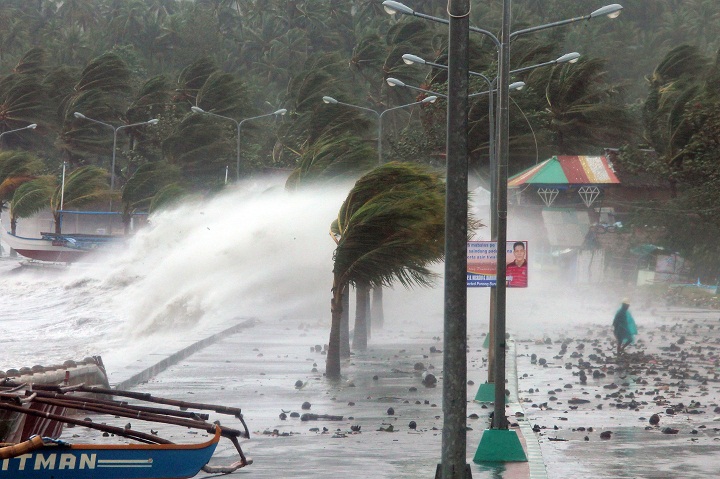TORONTO – Super Typhoon – the very phrase conjures up an image of a massive, powerful storm that spreads a swath of unimaginable destruction.

And that is exactly what Super Typhoon Haiyan did to the Philippines on Nov. 8.
But it could have been far worse. Haiyan wasn’t so much a large storm as it was powerful. It was also relatively fast-moving. But still, as the people of Tacloban can tell you, its devastation has affected tens of thousands of people.
Many people point to Haiyan as further evidence of climate change. But is that the case?
“A better question that I think we should be asking is, what would the odds of such a storm be of occurring in the absence of global warming. That’s a slight reframing of the question, and that’s something that the scientific community can answer quantitatively,” Andrew Weaver, the lead author of the International Panel of Climate Change‘s Climate Change 2007: The Physical Science Basis, told Global News.
Haiyan was one of the most powerful storms ever recorded on Earth, with sustained winds near 315 km/h.
Recent scientific models have concluded that hurricanes will not become more frequent, but rather stronger, due to anthropogenic, or human-caused, global warming. And storms like Superstorm Sandy and Haiyan lead climatologists to believe that this will be an ongoing trend.
“The strength of these hurricanes is linked to the ocean temperatures and the ocean temperatures are warming, very clearly,” said Weaver, who is now a Green Party MLA for Oak Bay-Gordon Head, B.C.
Michael Mann, distinguished Professor of Meteorology at Penn State University and author of the book The Hockey Stick and the Climate Wars told Global News, “Yes, climate scientists have long predicted that we would see increases in certain types of extreme weather events because of human-caused global warming.”
“One of those predictions was for more intense and destructive hurricanes and typhoons. We are indeed seeing that now. We are seeing the random dice of weather ‘loaded’ towards more Katrinas, more Sandys, and sadly, more Haiyans as well.”
Climate change, climatologists point out, has produced higher sea levels. And that has serious consequences on the effects of tropical storms.
“Global sea level rise is already one foot,” Mann told Global News. “By the end of this century, it could reach as much as six feet if we do nothing to slow our fossil fuel burning. Already, events like Superstorm Sandy and Super Typhoon Haiyan, produced far greater devastation, and in the latter case, many more deaths – because of the greater flooding due to higher sea levels.”
Mann also noted that Haiyan’s record-setting intensity was likely assisted by global warming, “strengthened by record upper ocean heat content.”
Mann is passionate about the evidence that points to global warming.
“It isn’t a mater of opinion. The greenhouse effect is two-century-old fundamental physics and chemistry,” he said. “The fact that we’ve increased the greenhouse effect, and thus warmed the planet, by increased greenhouse gas concentrations from fossil-fuel burning, is again indisputable. And the fact the the Earth is warming and the climate changing in much the way it was predicted to decades ago, is further confirmation that we are seeing the impacts of climate change already. And they will only get worse if we continue to bury our heads in the sand, as some climate change deniers still seek to do.”
The 2013 tropical storm season
The International Panel on Climate Change recently released the Provisional Statement on Status of Climate in 2013. It stated that January 2013 to September 2013 was warmer than the same period over the past two years.
Read more: Atlantic hurricane season predictions fall flat
“Atmospheric concentrations of carbon dioxide and other greenhouse gases reached new highs in 2012, and we expect them to reach unprecedented levels yet again in 2013. This means that we are committed to a warmer future,” said World Meteorological Organization Secretary-General Michel Jarraud.
By the beginning of November, the organization reported a near-average season. There had been 89 storms, with 12 named storms in the Atlantic. The Eastern Pacific had above-average hurricane activity: 17 named storms and eight hurricanes.
The North Indian Ocean had a below-average season with only two, compared with the average of four.
As for the Western North Pacific, there were 30 storms, above the average of 26. This included 13 typhoons, and Haiyan which was one of the most powerful storms ever recorded.



Comments